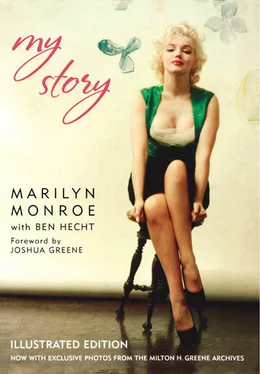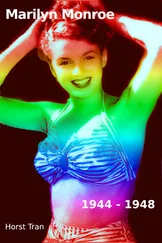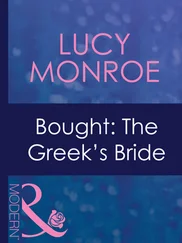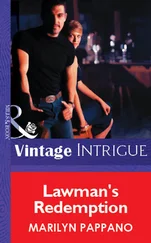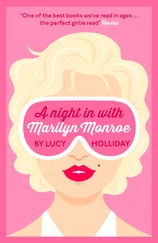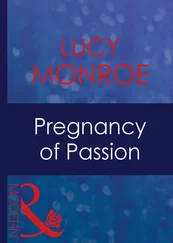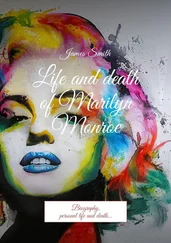my
story
ILLUSTRATED EDITION
MARILYN MONROE, with BEN HECHT
Foreword by JOSHUA GREENE
My father, Milton H. Greene, passed away in 1985. Though he was a successful New York–based fashion and portrait photographer, credited with over 150 covers and thousands of editorial pages, he’s remembered best for the body of work he created with Marilyn Monroe from 1953 to 1957.
Milton met Marilyn in the fall of 1953 on an assignment for Look magazine. They had an immediate, relaxed rapport and, like two children in a sandbox, began to create images together with playful abandon. A close and endearing friendship quickly grew.
The following year, Milton met up with Marilyn at the Los Angeles home of producer Joseph Schenck, with whom Marilyn was involved at the time. Also present was screenplay writer Ben Hecht. Schenck’s home offered expansive views with wonderful props for Milton and Marilyn to play off, as seen on page 148. Besides doing a series of candid pictures, still considered favorites, the four spoke of Marilyn doing a book about her life story, the result of which is the book in your hands. Marilyn and Ben Hecht spent time together over the next few months, and they began working on her biography. Before leaving California for New York to live with the Greene family, Marilyn had dictated her own words and Hecht put them to paper.
Rick Rinehart and I selected the pictures for this edition, and I want to thank Rick for his assistance in this project. Many of these are favorites that have been digitally restored from the original transparencies and negatives. When my father passed, he thought that most of his 300,000-image collection had faded and been lost to time. I started the Archives in 1993 to salvage his collection. Ever since I have embraced digital photo restoration. The technology has allowed me to pursue my passion, photography, while protecting and preserving my father’s legacy.
On page 21, there’s a photograph of Marilyn dressed in a bustier with ostrich feathers and a huge shiny necklace—costume jewelry, of course. This was a very special evening. Nobody knew where Marilyn had been for the last year and a half. She had moved to New York and with the help of my father, and his attorney had successfully sued Twentieth Century Fox to get her released from her slave contract. Michael Todd organized a fundraising event at Madison Square Garden with the Ringling Bros. Barnum & Bailey Circus. It was a star-studded, high society affair with Milton Berle as Master of Ceremonies dressed in riding boots and tails. At the end, when the performers came out for their final bow, Marilyn appeared riding on top of a pink elephant wearing this flamboyant outfit. It brought down the house.
On page 35 and 129, there are images from the “Hooker” series, so nicknamed because she was posing as a call girl on a French set on the Twentieth Century Fox back lots. On Sunday afternoons when not filming Bus Stop , Milton and Marilyn would run over to the wardrobe department and rummage through the costumes, looking for something to spark their imaginations. Milton was a “photographer’s photographer”—every frame was usable and he never overshot. Today’s younger generation may recognize this outfit from Madonna’s “Like a Virgin” video.
On pages 33 and 39, Marilyn is wearing a corduroy peddle-pusher suit, very much en vogue at the time, which was sold recently at an auction. I always wonder how these clothes turn up after all these years. I love the picture on the haystack because of the off-center composition and the fact that Marilyn has her head down. Look at how her left wrist is at an angle opposite to her right ankle. This is a great example of Milton’s natural eye for beauty and his appreciation of the silhouette.
The picture on page 44 was part of a wonderful sitting entitled the “Ballerina” series, as are the images on pages 3, 63, and 168. This was one of the first sittings Milton did as an experiment at his studio in New York rather than on assignment. The dress turned out to be too small for Marilyn—but that didn’t stop them. As you can see on page 44, the back of the dress is unzipped, and on page 168, she’s holding the frontispiece up in place.
The two pictures on page 54 and 58 came from the very first sitting Milton and Marilyn did together in 1953. The picture on page 54 captures an innocent Marilyn in an evening dress. In the picture on page 58, Marilyn was completely nude with only Amy Greene’s sweater coat on. This “Nude” series proved to be too risqué for the times and the image was never published until the 1970s. A sister image from this sitting was digitally restored specifically for Hugh Hefner and appeared on a 1997 commemorative cover of Playboy .
On page 69 is a fun photograph with Maurice Chevalier and his accompanist on the keyboards. Milton had three favorite props that turn up in many of his images: a cigarette, a hat, and some soft fabric like a scarf or a boa.
On page 75 is a candid shot during the filming of Bus Stop . Milton created the look of the makeup for Cherie, the character Marilyn played. If you have the opportunity to see the film, you’ll notice that Marilyn is radiant white as if she’s glowing inside. Milton decided that this character, who sleeps during the day and is inside at night, would never get any sun so she would be paste white. Lighting on movie sets is extremely bright, and actors usually have to wear a lot of makeup, darkening their skin to create contours with rouge and pancake. Since Marilyn herself was already paste white, Milton redid all of Marilyn’s lighting so she would appear white but in balance with the other characters. At the end of filming Logan graciously acknowledged my father’s vision, and they remained friends until their deaths. Oh, by the way, notice the prop in Cherie’s hands. There are no accidents. Other images from Bus Stop appear on pages 11, 27, 47, 71, 81, 91, 105, 119, and 155.
The casual pose pictured on page 82 was part of a series of pictures Milton and Marilyn did on the back lot of Twentieth Century Fox during the filming of Bus Stop scenes that did not include Marilyn’s character. Taken in the morning light, this beautiful image reminds us of the woman rather than the actress.
In 1956, before leaving for London to begin filming on Prince and the Showgirl , the three principles got together in Milton’s studio to take some much needed publicity photos to announce the beginning of production for the film. On page 125 you see Marilyn seated between producer/director and leading man Sir Lawrence Olivier and writer Terrence Rattigan. Another picture of “The Prince” and “The Showgirl” appear on page 96.
The candid on page 88 is a sultry image of Marilyn, taken on the set of Prince and the Showgirl. Bus Stop and Prince and the Showgirl were both produced by Marilyn Monroe Productions (MMP). MMP was the first production company where a woman was principle and had controlling interest. Marilyn had 51 percent and my father 49 percent. Though the shooting for Prince was much more tense and complicated than Bus Stop , the lighting, costumes, and the way Marilyn looked on the screen was beautiful. Other images from the film appear on pages 12, 99, 102, 132, 142, 145, and 177.
While Marilyn was living in my family’s house in Weston, Connecticut, my father had a wonderful daylight studio that he converted from a barn. The picture on page 137 with the red sweater stretched over her knees and the pictures on pages 6 and 139 wearing a tennis sweater were both done in that natural light environment.
After the announcement of MMP, Edward R. Murrow contacted my father to discuss doing one of his Sunday evening live “Person to Person” broadcasts. Marilyn, Milton, and Murrow met in a penthouse suite at the Hotel Pierre. This candid photograph on page 146 was one of a few taken while the trio met.
Читать дальше
